Gone with the wind: Seasonal distribution and habitat use by the reef manta ray (Mobula alfredi) in the Maldives, implications for conservation
May 2020
Joanna L. Harris, Peter K. McGregor, Yvonne Oates & Guy M. W. Stevens
Keywords: Archipelago • Climate Change • Conservation Evaluation • Endangered Species • Fishing • Marine Protected Area (MPA) • Ocean • Pollution
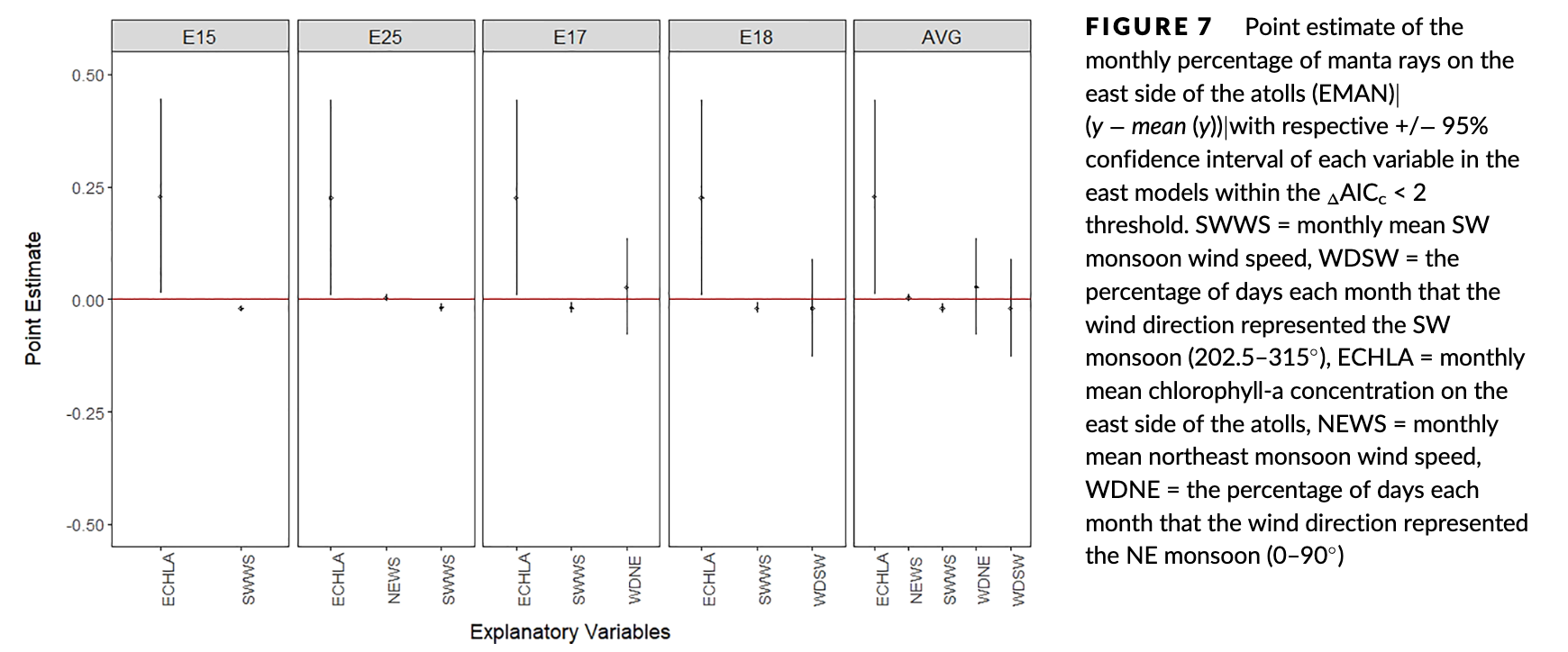
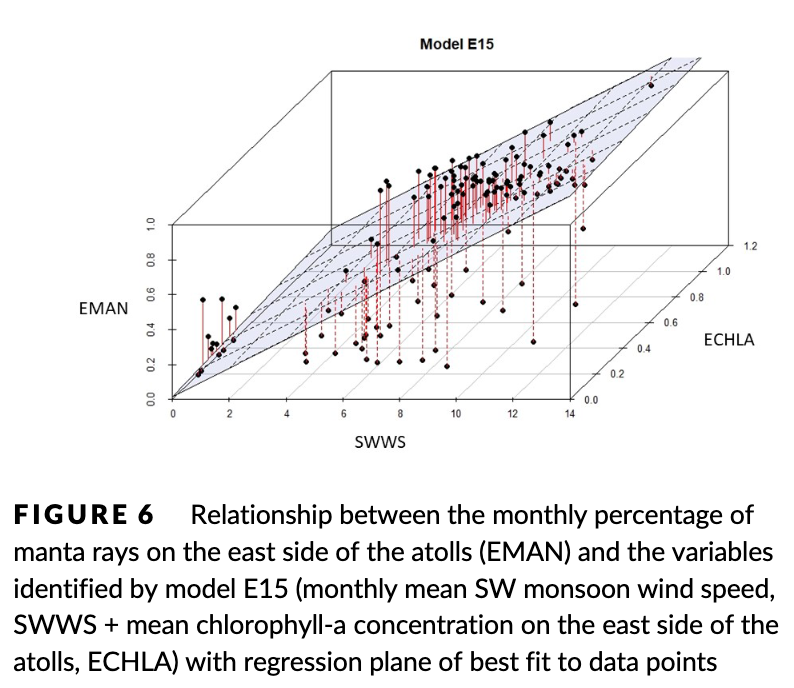
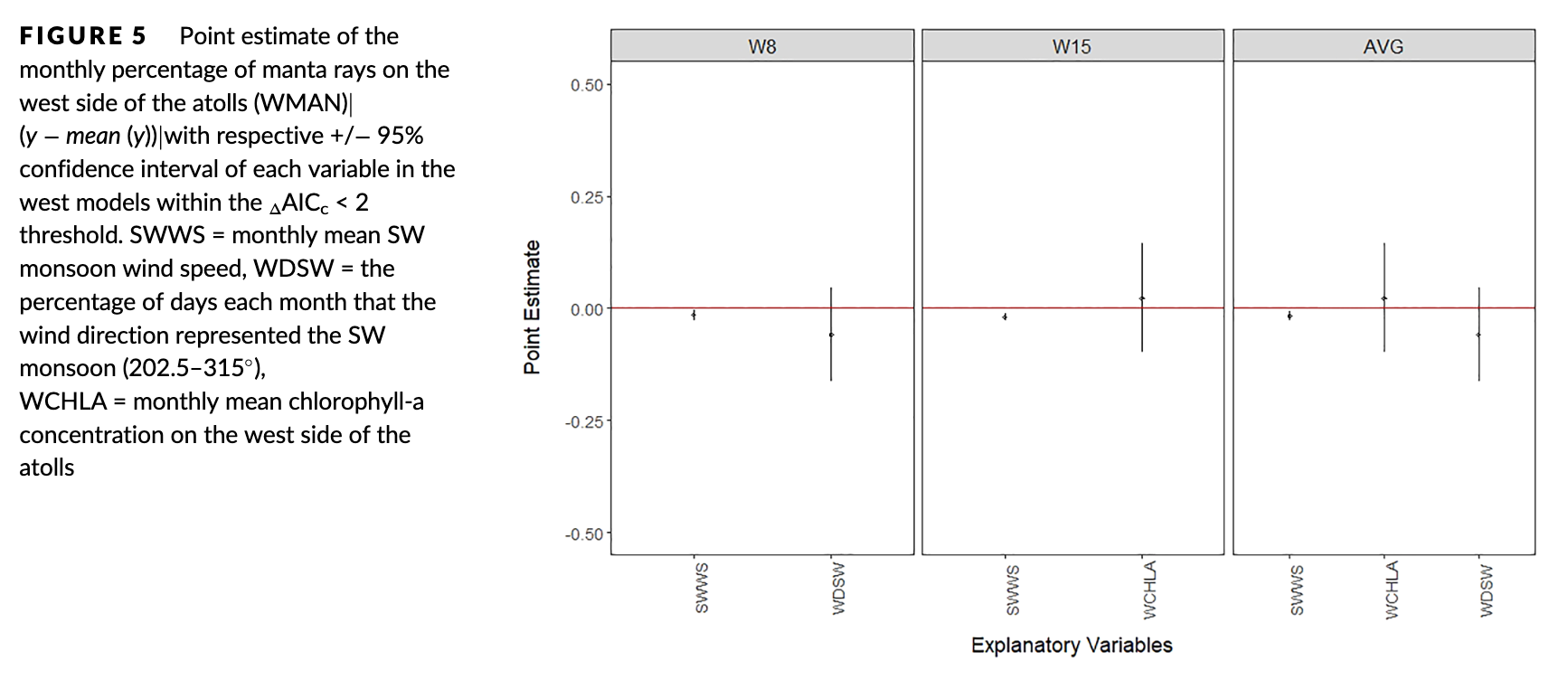
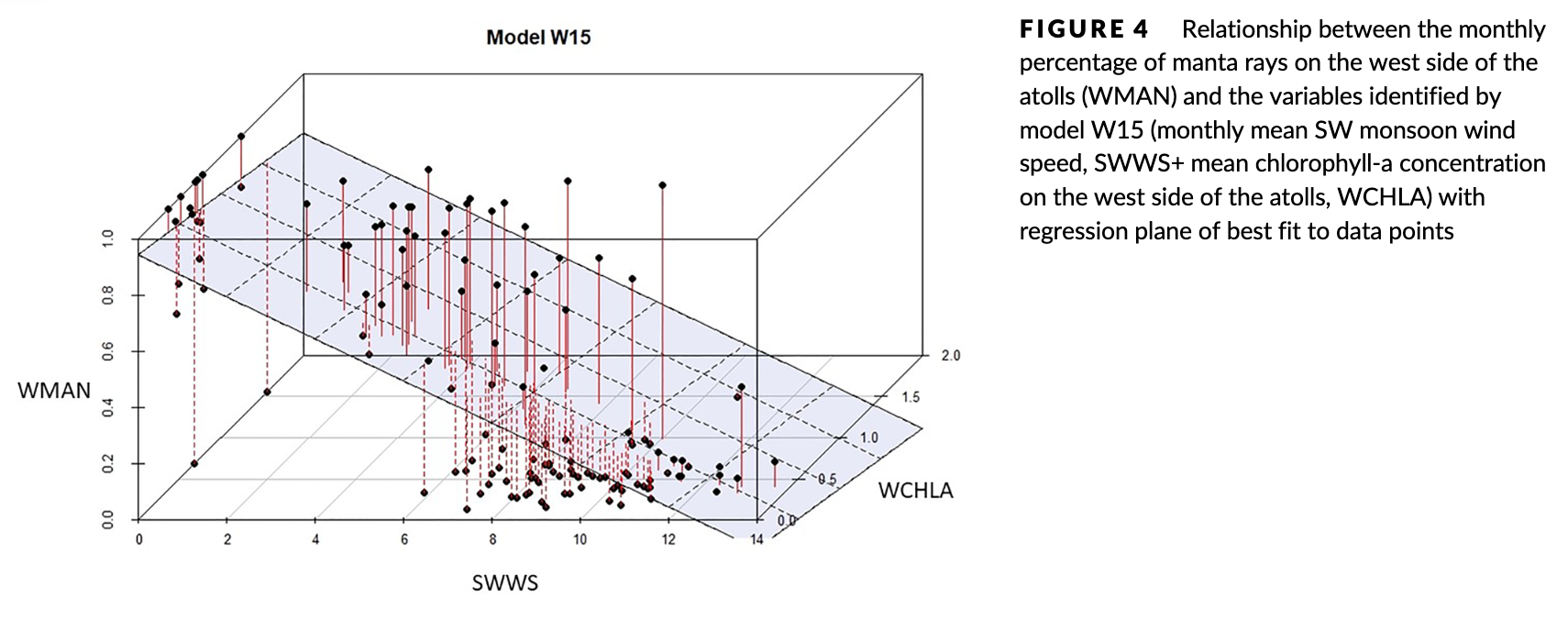
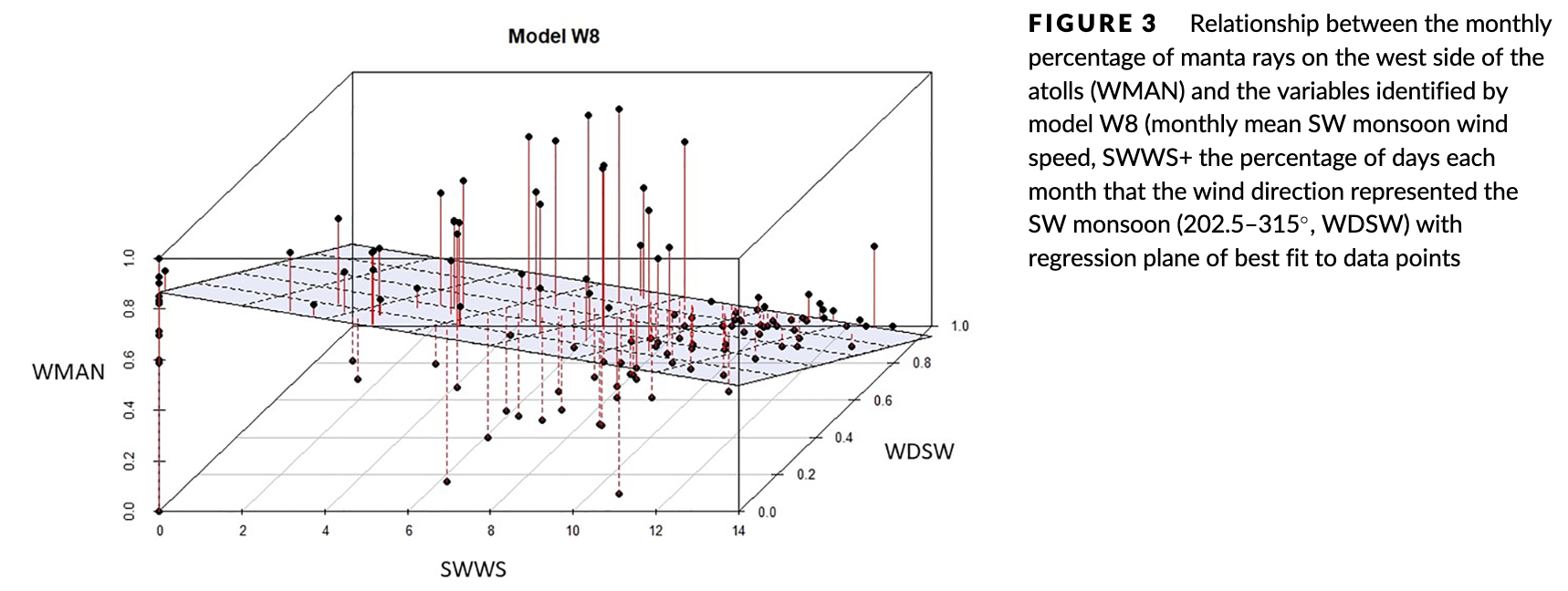
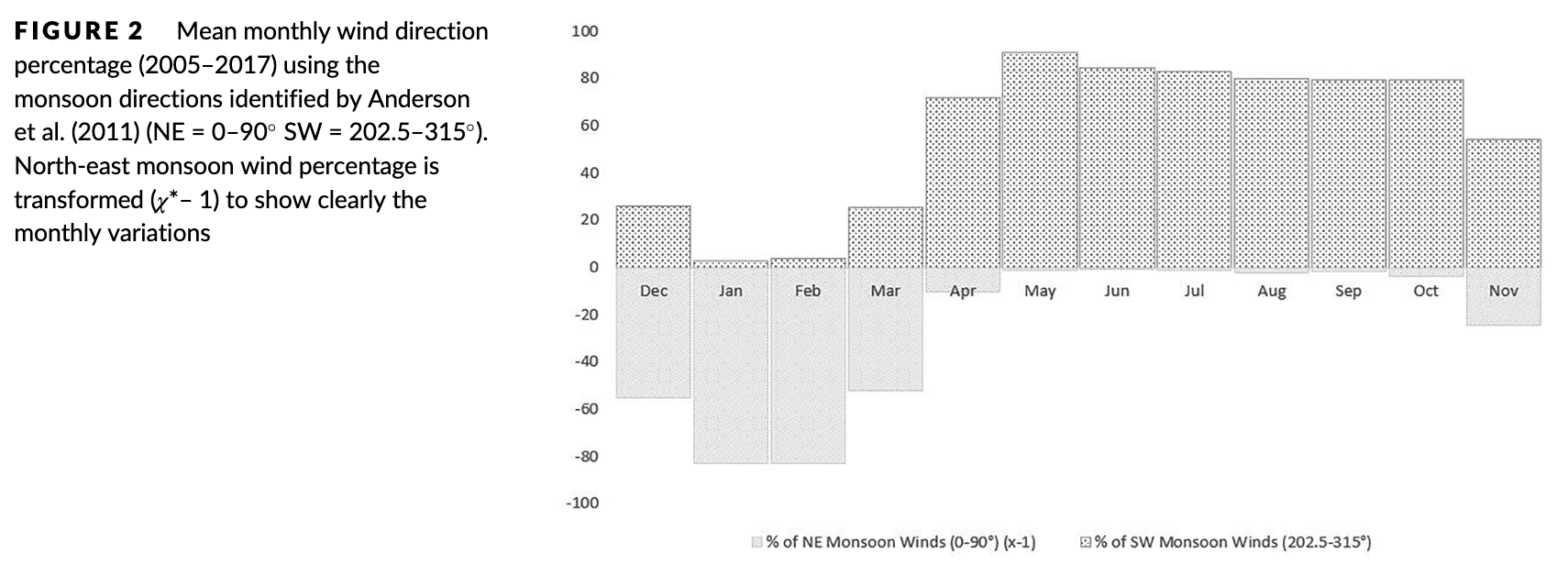
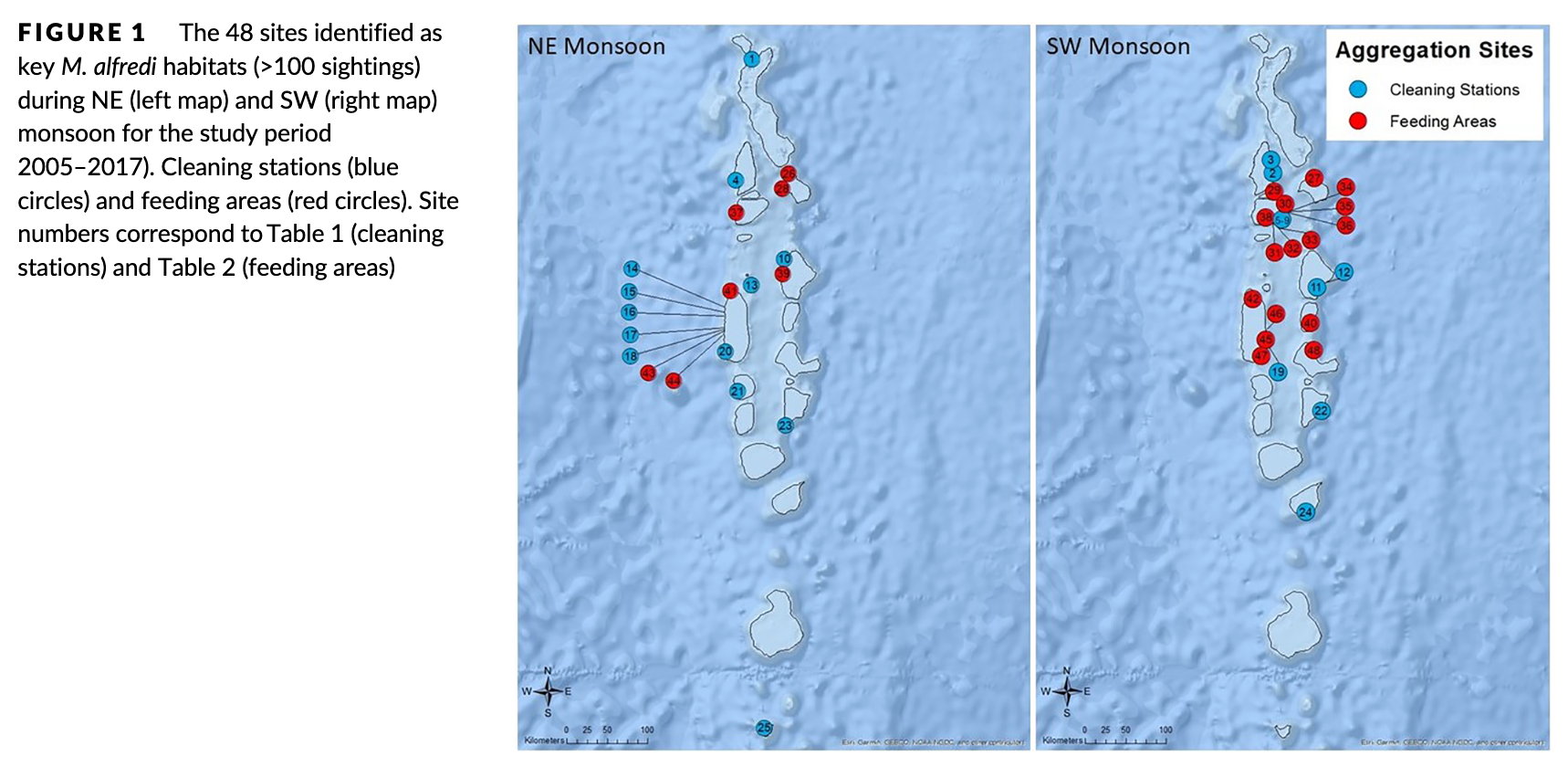
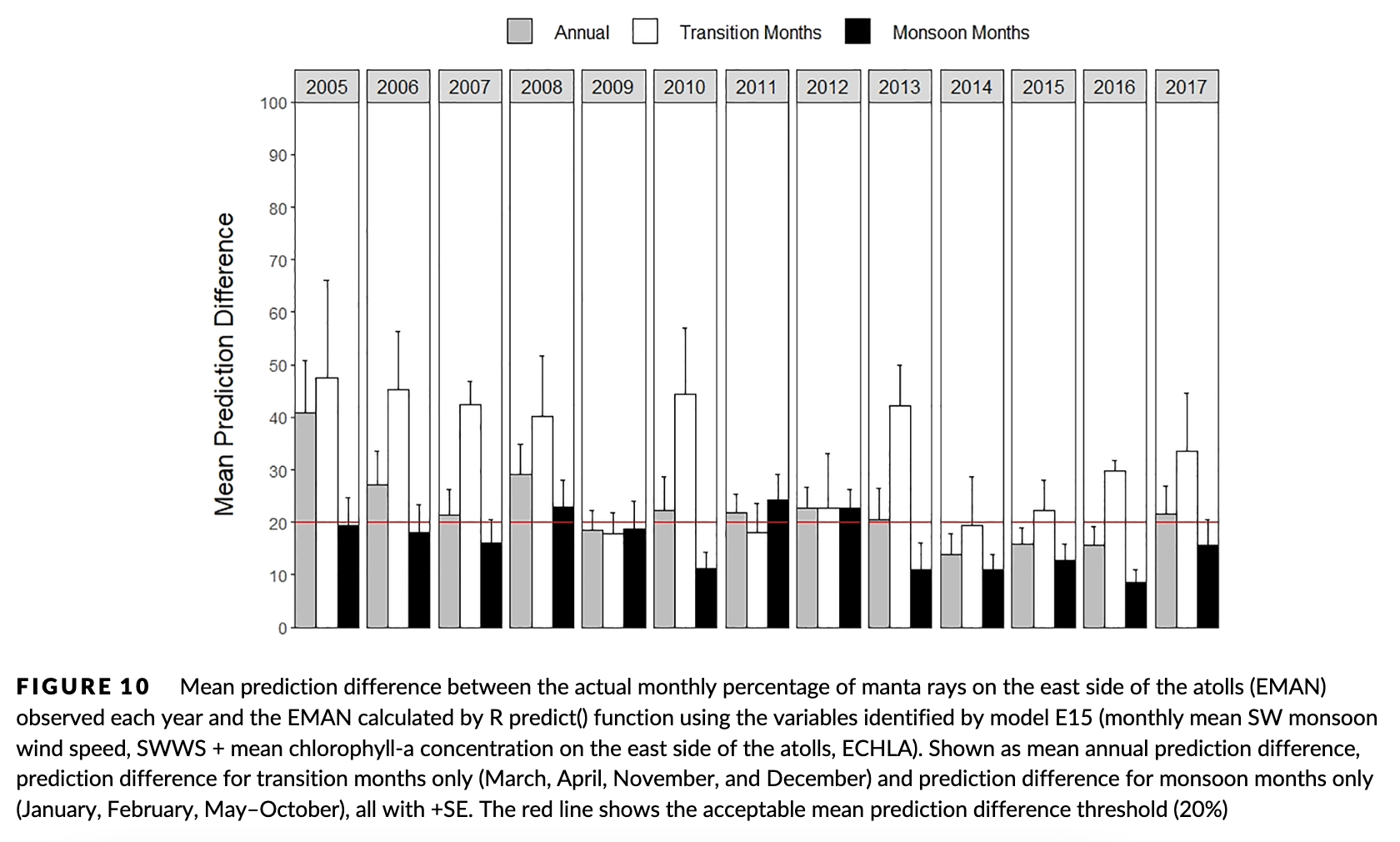
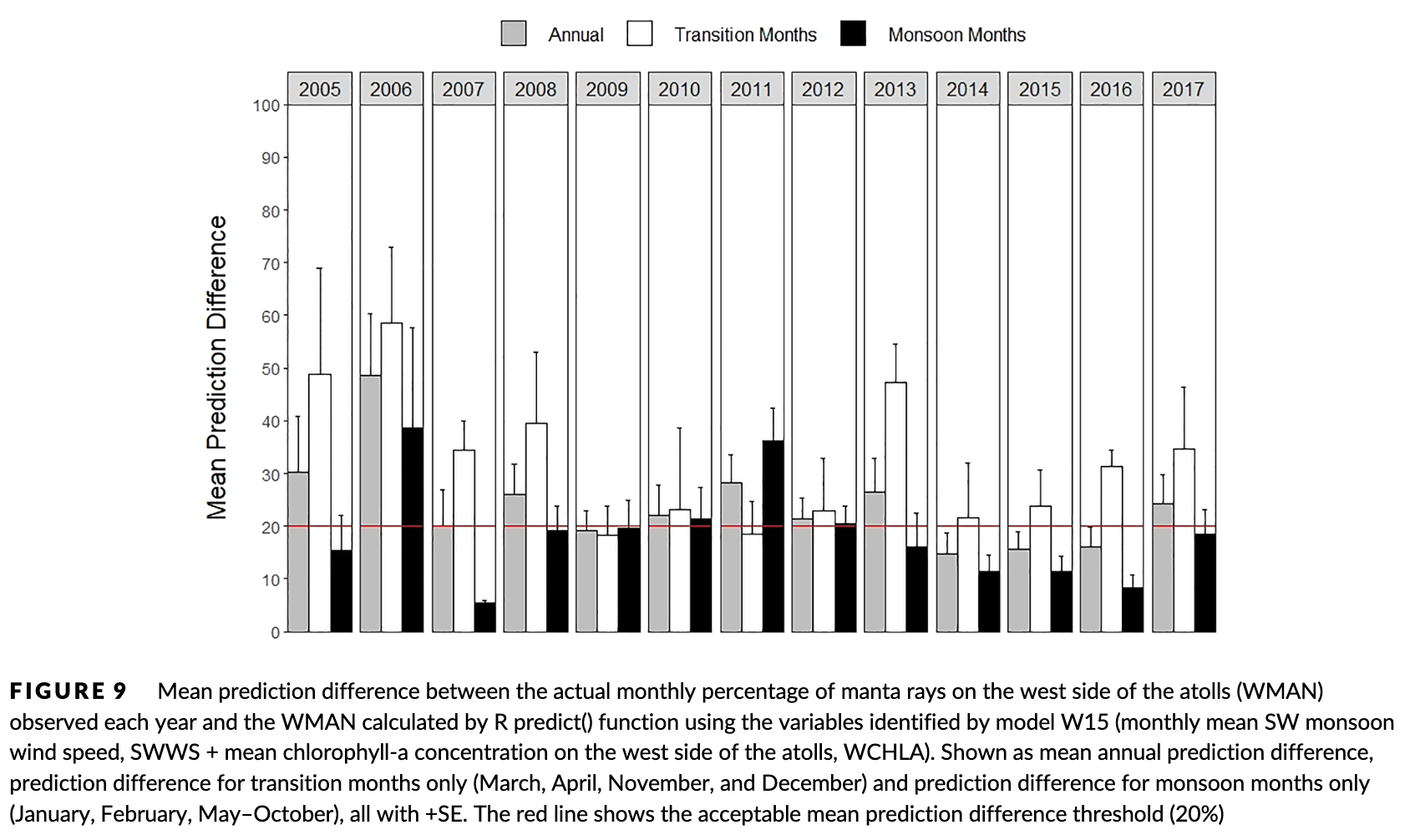
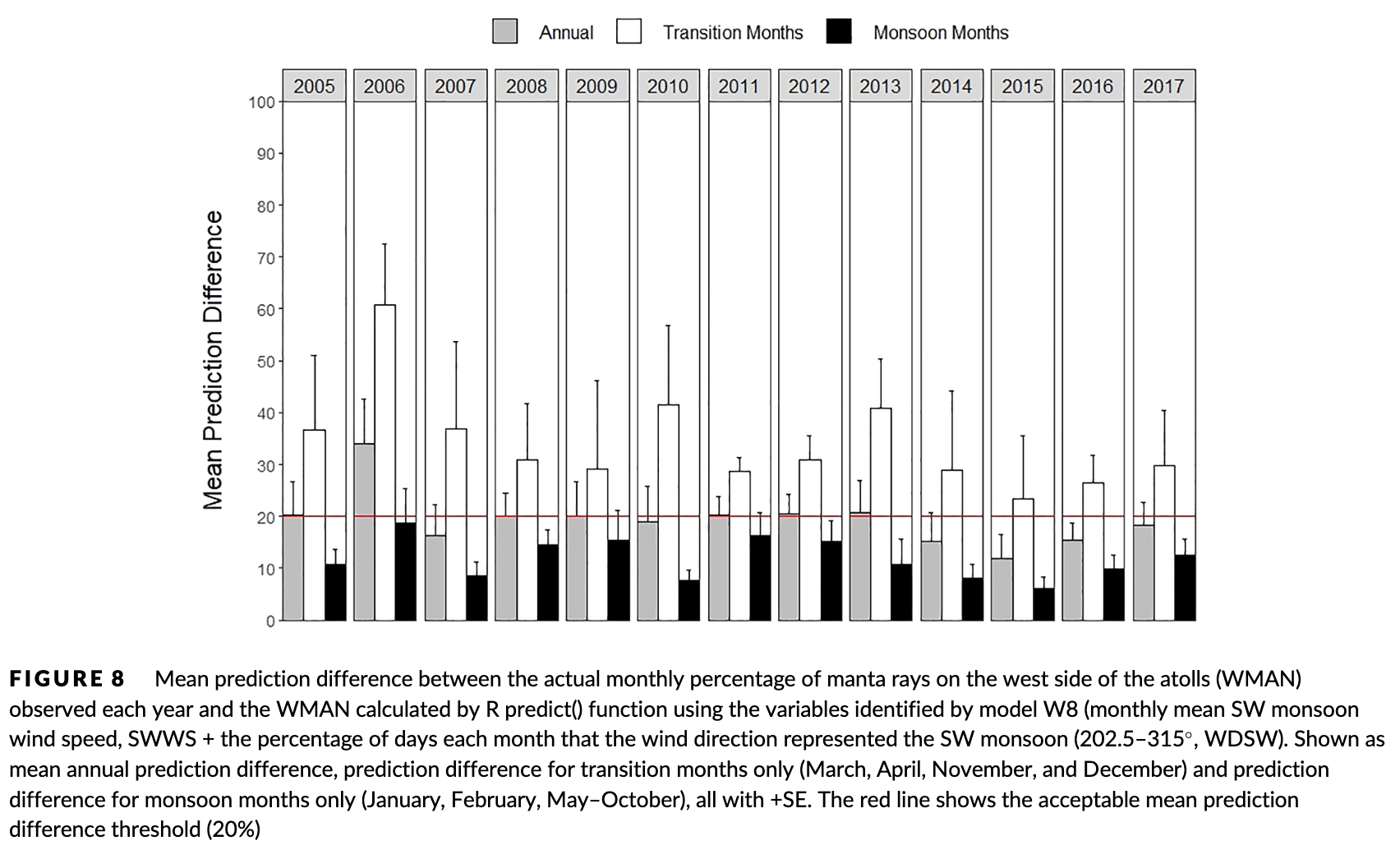
Summary: The global population of reef manta rays has declined due to targeted and bycatch fisheries coupled with their slow growth, low fecundity, and late maturity traits. The Maldives has the largest known subpopulation of these rays, but their conservation relies on knowledge of habitat use and environmental influences on their movements. This study used photo-ID sightings to identify key areas of habitat use and found that south-west monsoon winds and chlorophyll-a concentration were the main factors affecting the sightings. The study highlights the importance of protecting these key areas to effectively manage and conserve the species in light of climate change and tourism pressure.
Abstract
“1. Reef manta rays (Mobula alfredi) are one of the ocean's largest and most charismatic species. Pressure from targeted and bycatch fisheries coupled with their conservative life-history traits including slow growth, late maturity, and low fecundity has led to catastrophic declines of the global population. The species is now listed as Vulnerable to Extinction on IUCN Red List of Threatened Species.
2. The global M. alfredi population is widely distributed in highly fragmented subpopulations. The Maldives supports the world's largest known subpopulation that undergoes seasonal migrations which are thought to be linked to peaks in ocean productivity induced by the South Asian Monsoon. Although the species is protected from targeted fisheries in the region, increasing pressures from habitat degradation and unsustainable tourism activities mean their effective conservation relies upon knowledge of the species' habitat use, seasonal distribution, and the environmental influences on such movements.
3. Photo-ID sighting records collected between 2005 and 2017 were used to identify key aggregation sites throughout the archipelago, and multiple linear regression and prediction analysis identified the environmental variables affecting variations in the intra-annual sighting frequency of M. alfredi.
4. Mobula alfredi were recorded at 273 different sites, 48 of which, with >100 sightings at each, were classified as key areas of habitat use. South-west monsoon winds and chlorophyll-a concentration predominantly affected the monthly percentage of M. alfredi sighted on the down-current side of the atolls.
5. In a country where climate change and touristic pressure are increasingly threatening this species and its habitat, the identification of key areas of habitat use and temporal changes in the use of these sites highlight the areas that should be prioritized for protection enabling more effective conservation management.”
Author Affiliations
The Manta Trust
University of Plymouth
Centre for Applied Zoology, Cornwall College
ISPA Instituto Universitário
Funded by
Save Our Seas Foundation

